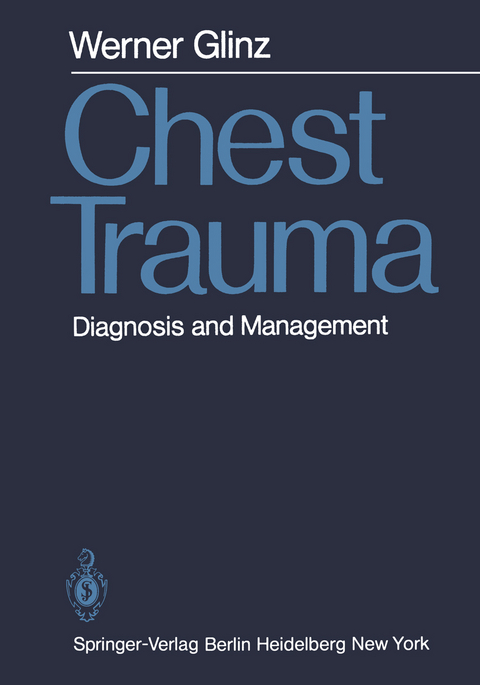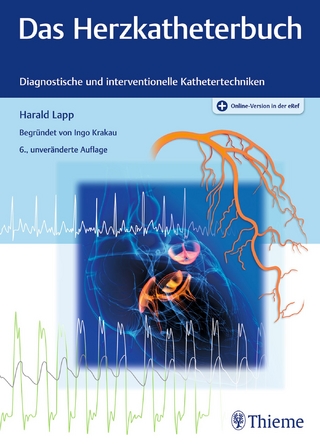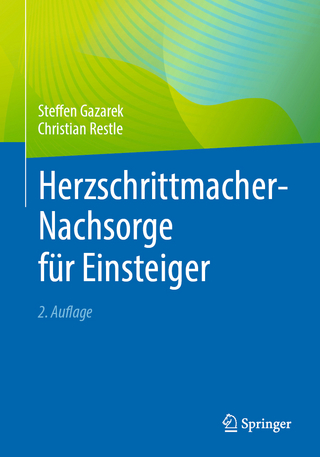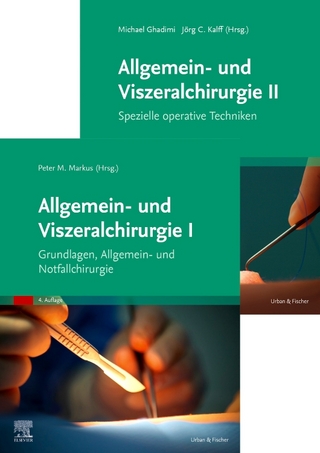
Chest Trauma
Springer Berlin (Verlag)
978-3-642-67859-2 (ISBN)
I General Considerations for the Assessment and Treatment of Thoracic Injuries.- 1 Initial Considerations in the Management of Severe Thoracic Injury.- I. The Ten Vital Questions in the Initial Evaluation of Severe Thoracic Injuries.- II. Evaluation after Initial Management.- 2 The Patient with Additional Injuries in Other Parts of the Body.- I. Craniocerebral Injuries.- II. Intra-abdominal Injuries.- III. Injuries of the Extremities.- IV. Maxillofacial Injuries.- V. Injuries to the Vertebral Column and Spinal Cord.- 3 Interpretation of the Chest Roentgenogram.- I. Basic Considerations.- II. Opacities.- III. Accumulation of Air.- IV. The "Widened Mediastinum".- 4 Respiratory Insufficiency.- I. Basic Considerations.- II. Assessment of Respiration in Patients with Thoracic Injuries.- III. Respiratory Insufficiency Caused by the Thoracic Injury Itself.- IV. Aspiration.- V. Adult Respiratory Distress Syndrome (ARDS).- VI. Fat Embolism.- VII. Other Forms of Respiratory Insufficiency Among the Injured.- VIII. Lung Damage Caused by Therapeutic Measures.- IX. Conclusions and Consequences for Prophylaxis and Therapy.- 5 Indications for Operation in Blunt Thoracic Trauma.- I. Indications for Immediate or Early Operation.- II. Indications for Subsequent Operations.- III. Contraindications to Operative Intervention.- 6 Operative Approaches.- I. Anterolateral Thoracotomy.- II. Posterolateral Thoracotomy.- III. Median Sternotomy.- IV. Approach to the Great Vessels of the Superior Thoracic Aperture.- V. Thoracoabdominal Approach.- 7 Special Considerations in Penetrating Chest Injuries.- I. Causes of Injury and Intrathoracic Injuries.- II. Evaluation and Therapeutic Procedure.- III. Prognosis.- 8 Aspects of Intensive Care of Patients with Thoracic Injuries.- I. Basic Considerations.- II. Monitoring and Evaluating the Patient with Thoracic Injuries in Intensive Care.- III. Mechanical Ventilation.- IV. Principles for the Infusion of Fluids.- V. Subsequent Pulmonary Complications.- 9 Physiotherapy of Patients with Thoracic Injuries.- I. Basic Considerations.- II. General Measures.- III. Forced Expiration.- IV. CO2-Induced Increase in Ventilation.- V. Intermittent Positive Pressure Breathing (IPPB).- VI. Maximal Voluntary Inspiration.- II Diagnosis, Clinical Significance, and Treatment of Specific Injuries.- 10 Rib and Sternum Fractures.- I. General Considerations.- II. Specific Types of Fractures.- III. Diagnosis.- IV. General Considerations for Therapy in Rib and Sternal Fractures.- V. Pain Control.- VI. Therapy of Flail Chest.- 11 Pneumothorax and Hemothorax.- I. Pneumothorax.- II. Tension Pneumothorax.- III. Open Pneumothorax.- IV. Hemothorax.- V. Clotted Hemothorax, Fibrothorax.- VI. Thoracentesis.- VII. Intercostal Tube Drainage.- 12 Traumatic Emphysema.- I. Subcutaneous Emphysema.- II. Mediastinal Emphysema.- 13 Lung Injuries from Blunt Trauma.- I. General Considerations.- II. Lung Laceration, Lung Rupture.- III. Intrapulmonary Hematoma.- IV. Traumatic Lung Pseudocysts (Pneumatoceles) 160 V. Lung Contusion.- VI. Blast Injuries.- 14 Tracheal and Bronchial Injuries.- I. Injuries to Trachea and Bronchi Caused by Blunt Trauma.- II. Old Bronchial Ruptures.- III. Penetrating Injuries to Trachea and Bronchi.- 15 Injuries to the Esophagus.- I. Rupture of the Esophagus, Penetrating and Iatrogenic Esophageal Injuries.- II. Traumatic Esophagotracheal Fistula.- 16 Injuries to the Heart by Blunt Trauma.- I. Basic Considerations.- II. Pericardial Injuries, Luxation of the Heart.- III. Hemopericardium, Cardiac Tamponade.- IV. Posttraumatic Pericarditis.- V. Cardiac Contusion.- VI. Heart Wall Ruptures.- VII. Traumatic Septal Defects.- VIII. Heart Valve Injuries.- IX. Injuries of the Coronary Arteries.- X. Traumatic Cardiac Aneurysm.- 17 Penetrating Wounds of the Heart.- I. Penetrating Cardiac Injuries.- II. Late Sequelae of Penetrating Cardiac Injuries.- III. Foreign Bodies in the Heart.- 18 Injuries of the Great Intrathoracic Vessels.- I. Rupture of the Aorta.- II. Penetrating Injuries of the Aorta.- III. Closed Injuries of the Supra-aortic Arteries.- IV. Injuries of the Great Veins and Pulmonary Vessels.- V. Penetrating Injuries of the Vessels of the Superior Thoracic Aperture.- VI. Posttraumatic Late Sequelae in the Great Vessels.- 19 Injuries of the Diaphragm.- I. Diaphragmatic Ruptures.- II. Penetrating Diaphragmatic Injuries.- 20 Other Injury Patterns and Consequences of Injury in Thoracic Trauma.- I. Traumatic Asphyxia.- II. Injuries of the Thoracic Duct, Chylothorax.- III. Cholothorax.- IV. Traumatically Induced Hernias of the Chest Wall.- V. Arterial Air Embolism.
| Erscheint lt. Verlag | 15.12.2011 |
|---|---|
| Übersetzer | G.H.Sr. Mundinger, G.H.Jr. Mundinger |
| Zusatzinfo | XII, 306 p. |
| Verlagsort | Berlin |
| Sprache | englisch |
| Maße | 170 x 244 mm |
| Gewicht | 560 g |
| Themenwelt | Medizinische Fachgebiete ► Chirurgie ► Herz- / Thorax- / Gefäßchirurgie |
| Schlagworte | Assessment • Cardiac Surgery • Cardiovascular • Head • heart • Lung • Medicine • patients • respiration • Surgery • therapy • Thoracic Surgery • Thoraxverletzung • Trauma • Treatment • vascular surgery |
| ISBN-10 | 3-642-67859-9 / 3642678599 |
| ISBN-13 | 978-3-642-67859-2 / 9783642678592 |
| Zustand | Neuware |
| Informationen gemäß Produktsicherheitsverordnung (GPSR) | |
| Haben Sie eine Frage zum Produkt? |
aus dem Bereich


